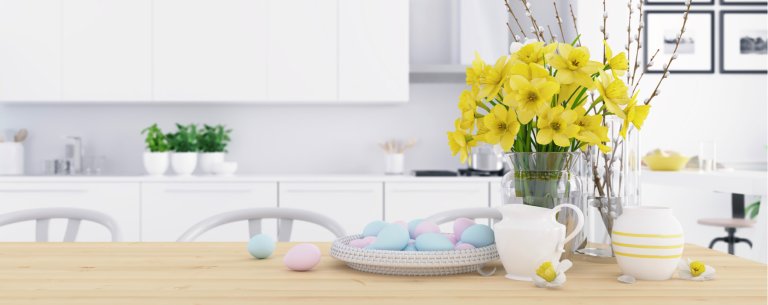Back
AROUND THE HOUSE: Got fruit trees? Sweet!

You really don’t have to be an expert to prune fruit trees. All it takes is a little common sense and a few helpful hints. As a rule of thumb, I place fruit trees in three different pruning categories: the ‘open centre’, the ‘central leader’ and the ‘espalier’ form.
Apples, pears and plums should have their centres opened up to allow more sun and air to penetrate.
This technique is called ‘open-vase’ pruning and it allows fruit to develop on the inside of the tree, on the tips and on the outward growing branches.
For this type of pruning, simply choose to retain three to five dominate branches radiating out from the main stem. These branches should be five or six feet off the ground, allowing you to comfortably walk or work under the tree without hitting your head. Once you have determined which branches you are going to keep, cut out any other branches left in the centre, as well as any inward growing ones. Next, cut out all the upward growing branches, leaving the tree looking like a very open ‘Y’. The remaining branches should be pruned back each year by approximately two feet, keeping this ‘Y’ formation intact.
A heavy pruning each year, unfortunately, results in a mass of water sprouts shooting out in all directions. To minimize this problem, once you have developed the tree’s ‘open-vase’ shape, you should switch to a training program rather than a pruning program. Training simply means weighing down the branches with soil-filled plastic bags to encourage growth in a horizontal pattern. This technique will minimize the need for massive pruning and greatly reduce the number of water sprouts you have to deal with each year. You will also find that these horizontal branches will be your best fruit-bearing stems. You will still have to cut them back by 18 to 24 inches to keep the tree’s size in check but this type of pruning will result in a tree that is far more productive and much easier to maintain.
Sweet cherries present a slightly different problem. They are perhaps the most vigorous of all fruit trees and resist any attempt to be pruned in an ‘open-vase’ shape. Sweet cherries tend to have a very strong stem or leader and because of that, they require ‘central leader’ pruning.
‘Central leader’ pruning simply means cutting back the main stem each year to control the rate of growth and at the same time, cutting back the outward growing branches even further, leaving an overall pyramidal form. If there are two or three strong central stems, it may be a good idea to eliminate all but one to avoid competition and to thin out the tree. The outward growing branches should be pruned back at a 45 degree angle. Next season the central leader may develop two or three new branches. The one that grows into the strongest and most upright main stem should be treated as your central leader and the other remaining stems can be removed or left, depending upon their growth habit. If they can be trained in an outward direction, simply cut them back next year on a 45 degree angle along with the other branches. Try, however, not to let the centre of the tree become cluttered. If you maintain the outside branches at a 45 degree angle each year, the result will be a tree which is fairly open and easy to maintain and one which will stay within reach of your ladder. Probably one of the best root stocks for cherry trees in a smaller home garden is the new dwarf, self-fertile varieties of Giesla root stock from Europe.
Espalier pruning is primarily done on trees such as peaches, nectarines and apricots. To minimizes disease problems such as ‘peach leaf curl’, these trees should be grown against the south or west side of a building.
Very compact apple and pear varieties are usually grown in the same manner, except out in the open against a fence or other support device. All that is necessary here is the removal of frontward and backward growing branches which don’t conform to an espalier formation. The most common problem is leaving too many branches on the tree, which causes over-production and simply clutters up the tree. Choose three to five sets of the strongest sideward-growing branches and remove the rest. If these branches have a tendency to grow upward, use a long bamboo pole as a T-bar to hold the branches in place. You will have to be quite ruthless in your pruning to maintain this very strict form. Most branches radiating off this framework will have to be removed, leaving many spurs and fruit buds along each stem.
You will probably run into a hundred questions once you start pruning. Many good, easy-to-understand books are available. Good pruning books will have excellent diagrams showing how your tree should look after each progressive season and as you know, pictures are worth a thousand words.
Often, garden stores offer pruning seminars at this time of year and I find them most helpful and informative.
••••••••••••
A bonus column from Brian Minter for Valentine’s Day...
Valentine’s Day is on Sunday and if you really want to make your special person happy, here is something you may find interesting.
The Society of American Florists, partnered with the world renowned researcher, Jeannette Haviland-Jones, Ph.D., of Rutgers University, researched the effect of flowers on human emotion and well being. Over a ten month period, some very interesting results were discovered. Dr. Haviland-Jones and her team found that the presence of flowers triggers happy emotions, heightens feelings of life satisfaction and affects future behaviour in a positive manner far beyond what is normally true. Flowers are a natural and healthful moderator of moods.
“Common sense tells us that flowers make us happy”, says Dr. Haviland-Jones, “and now science shows that not only do flowers make us happier than we know, they have strong positive effects on our emotional well being.”
Here are five main points as condensed from her report:
Flowers have an immediate impact on happiness. Study participants expressed true or excited smiles upon receiving flowers, demonstrating extraordinary delight and gratitude. This reaction was universal, occurring in all age groups.
Flowers have a long-term positive effect on moods. Study participants reported feeling less depressed, anxious and agitated after receiving flowers and demonstrated a higher sense of enjoyment and life satisfaction.
Flowers make intimate connections. The presence of flowers led to increased contact with family and friends.
Flowers are a symbol for sharing. The study explored where in their homes people displayed flowers. Once received, arrangements were placed in areas of the home that are open to visitors — such as foyers, living rooms and dining rooms — suggesting that flowers make the space more welcoming and create a sharing atmosphere.
People who buy more flowers are happier. Once learning the study results, participants in all age and gift categories reported that they would be buying more flowers in the future.
This may seem like a bit of promotion for the floral and horticultural industry but I thought these results would be interesting to everyone.
With so much stress and depression in today’s world, it’s great to know that something as simple as a bouquet of flowers can help to cheer someone up — a nice thought just before Valentine’s Day.
By: Tri-City News
GuidedBy is a community builder and part of the Glacier Media news network. This article originally appeared on a Glacier Media publication.
Topics
Related Stories
-
Design & Renovations
Spring & Summer Decor on a Budget: How to Create a Beautiful Home for Less
It's finally Summer, which means it's time to freshen up your home decor! But don't worry, you don't have to spend a lot of...
-
Home Decor Vancouver
Refreshing Your Home for Spring/Summer
There are many ways you can refresh your house for the spring/summer season. These projects can provide your house with the...
-
Home & Garden
Spring Cleaning Hacks
When the rain slacks off and the last of the snow is gone, it's time to open up the house and clean! While spring may feel like...
-
Home & Garden Abbotsford
How to Create a Zero-waste Household
Reducing your household waste can help the planet in many ways. You may even be able to eliminate your waste completely if...
-
Home Furniture & Decor Abbotsford
Working from home? 4 tips for your home office setup
Working from home can be a better experience for you with the right office setup. Setting up your in-home office correctly can...
-
Cleaners
5 Cleaning Tips That Will Make Your House Sparkle
If you’re getting ready for spring cleaning or another big home cleaning project, you’ll want to sanitize your living space as...
-
Home Decor
Houseplants You Absolutely Want to Have in Your House
Adding some plants to your interior setting can give your home a greener feel while promoting greater tranquility throughout...
-
Design & Renovations Whistler
True To Its Past
The romantic and rounded form of the traditional log cabin, once a staple in Whistler’s architectural landscape, has seen its...
-
Home Furniture & Decor Burnaby
Create an Awesome Home Office Space on A Budget
A small home office doesn’t have to be expensive, but properly planning your space is important so it’s a place you actually...
-
Design & Renovations Vancouver
How To Decorate Your Rental So It Feels Like Home
The right bath and hand towels can add energy to a room. Photo: Barb Lunter Older rental suites can sometimes be plagued...
-
Design & Renovations Vancouver
Spring Decor Tips to Refresh Your Space
Fresh flowers, topical coffee table books and garden ornaments used cleverly indoors are a few ways...
-
Home & Garden Vancouver Island
House Beautiful: 120-year-old Rattenbury home gets new life in Rockland
The owners of this handsome 120-year-old home used to live in a custom-designed, ultra-modern house on the waterfront near the...
-
Design + Build
HOME IDEAS: Lift yourself out of post-holiday funk with DIY projects
Taking down the holiday decorations is never a fun task. Once they are all removed the house can look a little bare. In...
-
Garden & Décor Burnaby
How to garden if you don't have your own garden
Paying $160 for the year was a pretty good price for a vacation property. Only eight minutes from Ben’s downtown apartment,...
-
Home & Garden
New plants worth trying
The horticulture industry is gradually catching up with the current home trend of compact living. Smaller, more refined and...
-
Garden & Décor Coquitlam
Five simple DIY weekend projects that can improve your home’s curb appeal
Your front door is the first thing you see when you get home at the end of the day and it’s the first impression your home...
-
Flooring
HOME IDEAS: Carpet tiles give your floor needed versatility
Environmental consciousness is definitely a priority these days, and it’s interesting to see how it’s spilling into the...
-
Garden & Décor
DESIGN IN NATURE: Garden pests can be dealt with naturally
Everyone should know that using cosmetic pesticides is banned in all three North Shore municipalities. Using these...
-
Home & Garden
Tips to stay tick-free
The first day of spring is a welcome sight for more than just the people of Kamloops – it's a big moment for the...
-
Design & Renovations
Compile a reno or building wish list
If you're planning on renovating your home or building a new one you undoubtedly have some definitive ideas on what you'd like...
-
Home Furniture & Decor Delta
It just takes a little determination to design a gallery wall
Gallery walls, also called moment walls, are one of today's hottest home decor trends. Gallery walls enable homeowners to...
-
Cleaners Burnaby
‘Uber for laundry’ moves into Burnaby. Because people are that lazy
Look, I know the headline for this blog seems harsh, but I’m actually not judging. Just stating a fact – people in our...
-
Garden & Décor
HOME IDEAS: Create a guest room that visitors will want to come back to
Are you expecting visitors over the summer holidays? There’s something special about creating a warm and inviting living space...
-
Bathrooms
HOME IDEAS: Bathe your bathroom with simple, modern flourishes
If you were fortunate enough to visit this year’s BC Home + Garden Show here in Vancouver, you may have come home with some...
-
Flooring
Family company built from the floor up
Many family businesses are built from the ground up, but Woodopolis Home Centre literally started with hardwood...
-
Home & Garden Vancouver
DESIGNER FILES: Wallpaper covers all bases for your interior
If your last interaction with wallpaper was the unforgettably tacky, impossible-to-remove and overused versions that ran...
-
Design & Renovations Delta
Rooms do double duty in smaller homes
Many homes do not have space for guest rooms, play areas and home theatres that are possible in homes with substantial square...
-
Garden & Décor New Westminster
Let's give a shoutout to these multi-tasking plants
When is a garden-variety plant more than a plant? When it provides multiple functions. Take flowering trees and shrubs that...
-
Garden & Décor Burnaby
Veggie creep is one of the next big things in gardening
Want to be on the leading edge of your gardening community? We have spent a lot of time forecasting the next big thing for the...
-
Home Furniture & Decor Vancouver Island
Debbie Travis: Benefits of benches include extra seating, storage
Dear Debbie: I was debating with a friend what was an “extra” piece of furniture she couldn’t do without. We agreed that a bed,...
-
Contractors Prince George
Why this Prince George contractor settles for nothing but the best
Sponsored Content “I’m very passionate,” says Robert Rivey, “and I suppose I always do my best.” This sort of...
-
Bathrooms Maple Ridge
Woodopolis: Making local bathrooms beautiful
Sponsored Content Bathroom renovation may not be what people think of when they hear of Woodopolis Home Centre, but...































